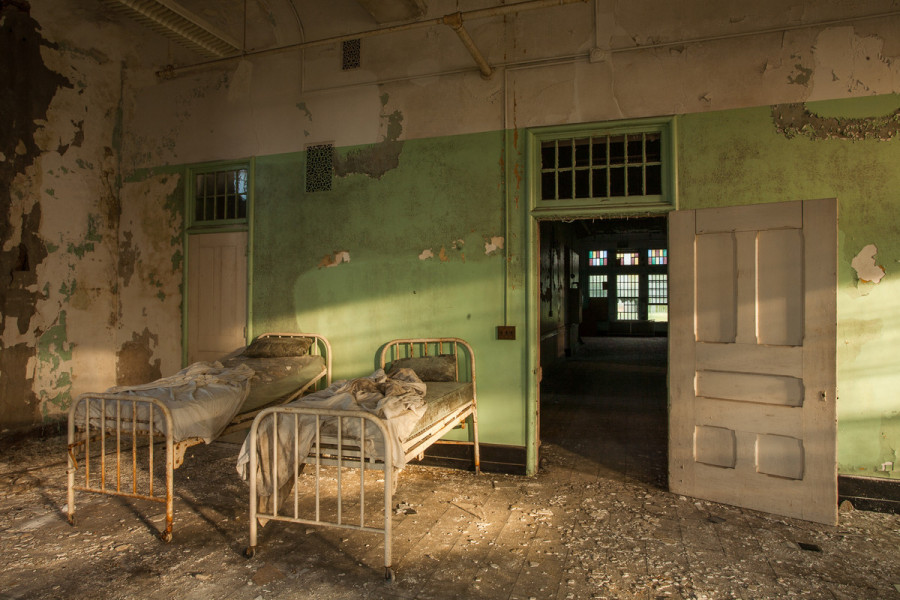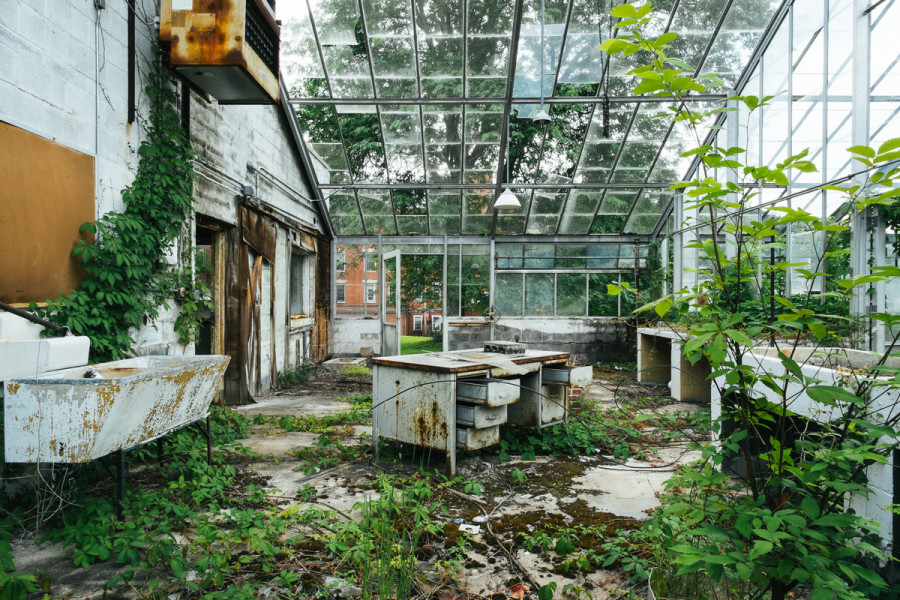Photographer Jeremy Harris was in Buffalo, New York when he discovered his first abandoned asylum. It was in 2006, when he was visiting the "uncle of a girlfriend at the time," and noticed a beautiful, old Gothic building on a local university campus.
The property was ominously surrounded by a chain link fence, which only piqued Harris' curiosity. He researched the building and soon discovered it was the former Buffalo State Lunatic Asylum (later the Richardson Olmstead Complex), and had been abandoned since the 1980s.

"Needless to say, I was intrigued," he explained to HuffPost. He made his back to the campus to dig deeper. "With a little effort, I managed to locate an open window. Once inside, I was hooked. It was absolutely amazing."
Thus began a years-long love affair with similarly obsolete psychiatric institutions. The photographer, long obsessed with abandoned landscapes from farm houses to factories, began making exploratory trips to various parts of the United States, making specific connections in Massachusetts and New Jersey. Captivated by the fading beauty and natural decay, he began documenting the artifacts and forgotten evidence of the people who once populated -- and often times died within -- the so-called asylums.
The resulting series, "American Asylums," gives an unrestrained glimpse into medical facilities so stigmatized they've been left in utter disrepair, yet not demolished. As though the public can't stand to remember what once went on inside them, nor can it face destroying the legacy of the past individuals subjected to such a system. Harris' photos project a new image of these locales -- some of them dating their origins back to the 19th century -- drenched in light and bursting forth with wild vegetation.

The series' subhead reads: Moral Architecture of the 19th Century
"All my images are meant to be a tribute to the locations and it’s inhabitants," Harris remarked.
While photos of abandoned spaces have at times been criticized for their seemingly voyeuristic take on dying architecture, Harris' intimate lines and careful perspectives suggest a sense of homage. When asked how he feels about the term "ruin porn" and its growing popularity online, he replied:
"For me it’s always been a double-edged sword. I love that people are out there enjoying and documenting abandoned spaces that will eventually be gone, but the more people that visit a space, the more destruction is inevitably wrought on the place. It’s rare these days to find a location that hasn’t been trampled on by hundreds of people and photographed to death. I’m still searching for them though."
Check out a preview of Harris' series below. Head to his website to view more of his work.

















